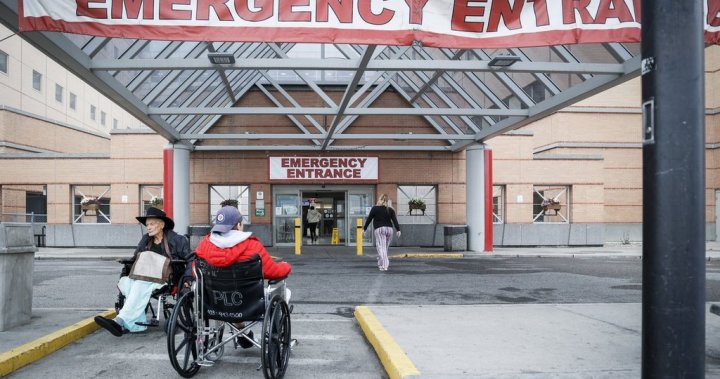I still remember my first visit to an emergency room in Edmonton. It wasn’t as a journalist, but as a worried daughter when my mom slipped on ice three winters ago. The eight-hour wait in those uncomfortable chairs, watching healthcare workers rushing between patients lining hallways, left an impression that’s hard to shake.
That memory flooded back yesterday when I spoke with Dr. Warren Thirsk, an emergency physician who’s reached his breaking point with our province’s healthcare crisis.
“I’ve worked in emergency medicine for over 20 years, and I’ve never seen conditions this dire,” Dr. Thirsk told me during our interview at a local coffee shop, his exhaustion evident despite the double espresso in front of him. “Our patients deserve better than being treated in hallways and waiting rooms.”
Dr. Thirsk has taken an unusual step – extending a public invitation to Premier Danielle Smith to witness firsthand what’s happening in Alberta’s emergency departments. His frustration mirrors what many healthcare workers have expressed to me off the record for months.
The numbers paint a troubling picture. According to Alberta Health Services data, emergency departments across the province regularly operate at 150% capacity or higher. What this means in human terms: patients waiting hours – sometimes days – for care, often in hallways without privacy or proper monitoring.
Edmonton’s hospitals have been particularly hard hit. During my recent visit to the Royal Alexandra Hospital for another story, nurses described the daily struggle of providing care in what one called “impossible circumstances.”
“We’re doing our absolute best,” explained Margo Davidson, an ER nurse with 15 years of experience. “But when you have patients in every corner, in chairs, in hallways – it’s not just about comfort, it’s about safety.”
The Alberta Medical Association has been sounding alarms about these conditions for years. Dr. Paul Parks, who heads the AMA’s emergency medicine section, didn’t mince words when I spoke with him.
“This isn’t just a capacity issue – it’s a system-wide problem that needs urgent attention,” Dr. Parks said. “We need comprehensive solutions addressing everything from primary care access to long-term care beds.”
For everyday Edmontonians, these statistics and statements translate to very real experiences. Last month, I received over thirty emails from readers sharing their emergency room stories after my column on healthcare access.
Maureen Thomlinson, a 67-year-old grandmother from Mill Woods, described spending 13 hours in a hallway with suspected pneumonia. “I understand the staff are doing their best,” she wrote. “But I felt forgotten there, watching doctors and nurses running between emergencies, knowing they couldn’t possibly keep up.”
The provincial government has announced various initiatives to address healthcare challenges, including the recent $20 million commitment to reduce surgical wait times. But critics, including opposition health critic David Shepherd, argue these measures don’t address the underlying issues.
“Band-aid solutions won’t fix a system that’s hemorrhaging healthcare workers and failing to meet basic patient needs,” Shepherd told me during a phone interview. “We need comprehensive action that addresses primary care, emergency services, and the social determinants of health.”
Health Minister Adriana LaGrange responded to Dr. Thirsk’s invitation through a statement to my inquiry, saying the government “takes these concerns seriously” and is “working diligently with AHS to implement solutions.” The statement didn’t indicate whether Premier Smith would accept the invitation to visit emergency departments.
For healthcare workers on the frontlines, political promises often feel disconnected from their daily reality. Dr. Thirsk emphasizes that his invitation isn’t about politics but patient care.
“This isn’t about pointing fingers,” he said. “It’s about having decision-makers understand what patients and healthcare workers experience every day so we can find real solutions together.”
As I wrapped up my conversation with Dr. Thirsk, he shared something that stayed with me: “In emergency medicine, we’re trained to make difficult decisions under pressure. But no one should have to decide which hallway patient needs attention first because there aren’t enough proper beds.”
Looking beyond the statistics and statements, this crisis affects our entire community. Whether you’re a parent with a child running a high fever, a senior with chest pain, or someone experiencing a mental health emergency – the state of our emergency departments impacts us all.
As Edmonton continues growing, finding sustainable solutions becomes increasingly urgent. The question remains whether those with the power to implement change will witness the conditions firsthand – and what actions will follow.
In the meantime, healthcare workers like Dr. Thirsk continue showing up, doing their best in increasingly challenging circumstances, hoping their calls for help will finally be answered with meaningful action.







